- 12:14
- Expertise video
The aim of the study was to calculate the time to PRRSv-stability (TTS), the time-to-baseline-production (TTBP) and total losses in a European context.
The aim of the study was to calculate the time to PRRSv-stability (TTS), the time-to-baseline-production (TTBP) and total losses in a European context.
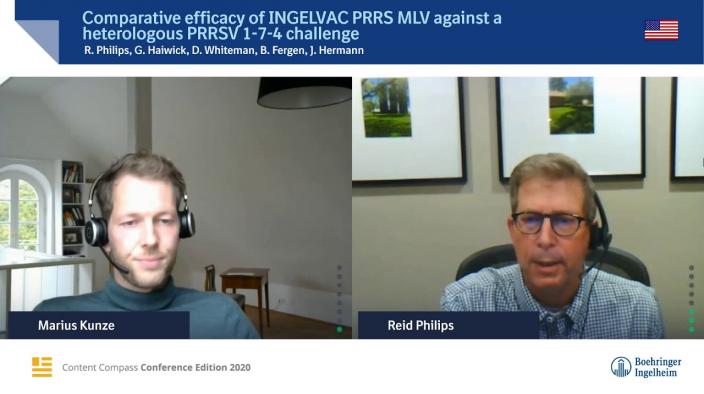
The use of INGELVAC PRRS vaccines can significantly reduce lung lesions following challenge with heterologous isolates (86- 94% ORF5 nucleotide similarity) in the three-week-old pig respiratory challenge model.1 INGELVAC PRRS MLV demonstrated heterologous protection against challenge with current PRRSV lineage-1 RFLP 1-7-4 and 1-3-4 isolates.2 The objective of this study was to evaluate the efficacy of two commercially available PRRSV vaccines in a three-week-old pig respiratory challenge model, using a heterologous PRRSV lineage-1 RFLP 1-7-4 field strain that was isolated in 2016.
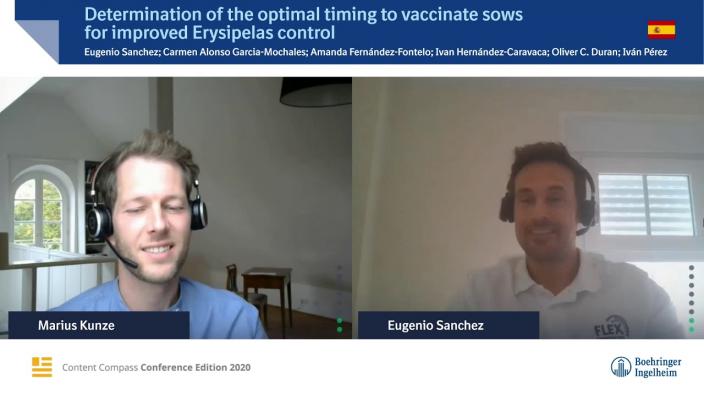
Despite the intensive vaccination programs applied in the field, erysipelas continues to be a costly global concern for the swine industry and public health 1,2,3. Post-farrowing vaccination is routinely applied to protect the breeding stock. However, there is a need to vaccinate growing pigs due to a lack of protection in the finishing period, and it is not uncommon to detect outbreaks in the field due to antibody waning 4,5. There is a need for further studies that aim at investigating other vaccination protocols that may increase protection against erysipelas under commercial conditions. Therefore, the specific objectives of this study were two-fold: 1) to study the seroconversion in sows and piglets between pre- and post-farrowing protocols against erysipelas over time; and 2) to describe the time-to-negative erysipelas protection between protocols.
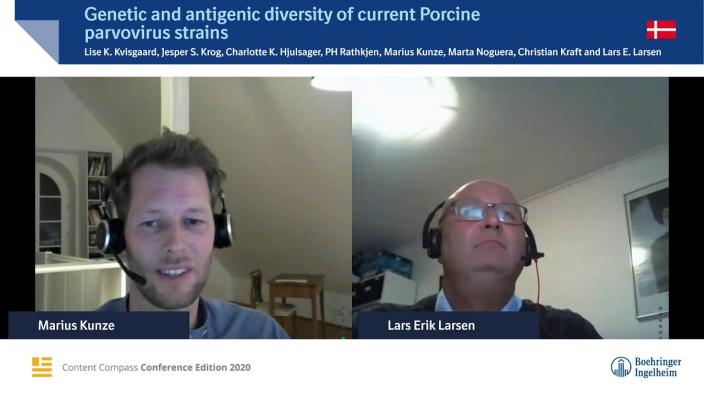
Porcine parvovirus (PPV) is widespread in swineherds globally and causes reproductive failure manifested by the SMEDI-syndrome. DTU VET receives annually between 50-100 samples from aborted fetuses from Danish herds. During recent years, the average prevalence of positive submissions has increased from 4 % to 17 %. The aim of the study is to investigate the genetic and antigenic diversity of Danish PPV isolates. Furthermore, the cross reactivity of antibodies raised to commercial available PPV vaccines was tested.
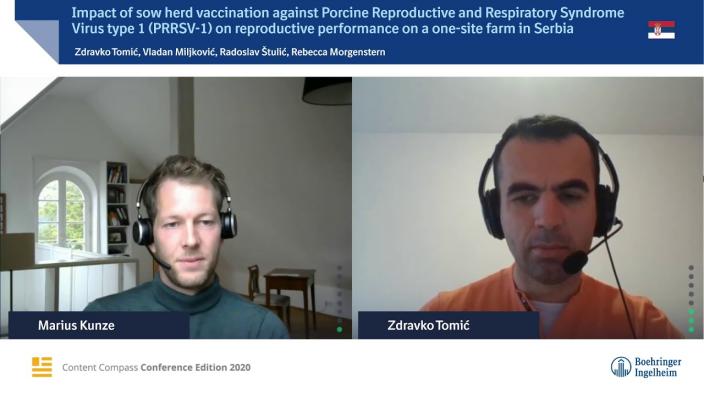
PRRSV can cause significant impact on reproductive performance in endemically infected herds. This study aimed to investigate sow performance before and after implementation of a sow herd vaccination against PRRSV on a farm in Serbia.
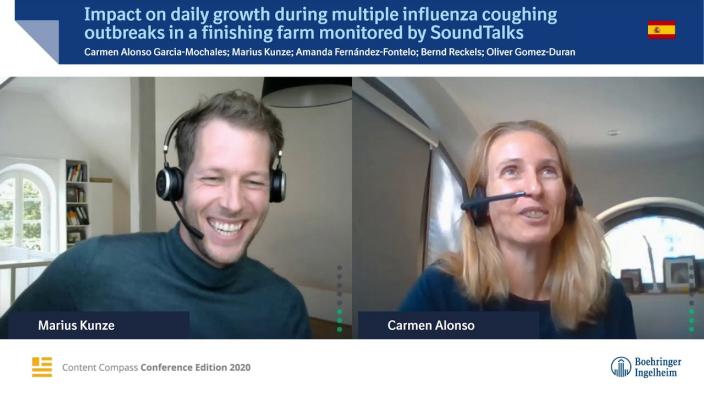
Cough is a common symptom of finishers. Nowadays, real-time technology is available for pig cough recognition as part of a precision livestock farming system1,2. However, once cough is recognized in the field, there is a need for a better understanding of its concurrent impact on growth performance. Therefore, the objective of this study was to compare and quantify the impact in daily growth (ADGW) of disease-coughing outbreaks occurring in a finishing batch of pigs under commercial conditions.

Current swine production systems are achieving remarkably high numbers in piglets/wean/sow per year. This high performance of the sow during the lactation period is potentially due to genetic, feed, health, and management improvements. However, despite these important efforts, post-farrowing vaccination in sows is routinely applied to protect the breeding stock against Parvovirus sp. and erysipelas1.Therefore, there is a need to study the impact that this strategy may have on sow and piglet’s production performance parameters when applied during their lactation period2,3. As a result, the objectives of this study were to evaluate the potential impact that vaccination during the lactation period may have in sows and their offspring’s performance.

Porcine circovirus type 2 (PCV2) has a great impact on breeding herds, predominantly associated with increased stillborn and mummified fetuses at parturition. (1, 2) Reports have shown that mass vaccination of sows against PCV2 would improve the reproductive performance and are proven to be safe. This study reports a recurrence of PCV2 infection in the sow herd after discontinuation of mass vaccination against PCV2.
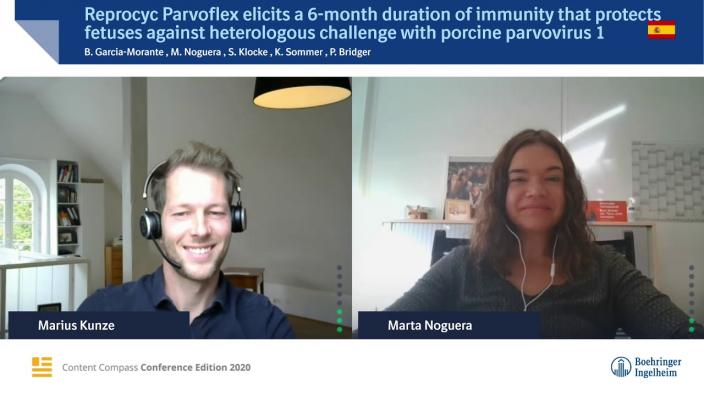
Long-lasting immunity achieved by means of vaccination is the main tool to prevent porcine parvovirus 1 (PPV1) infection and its associated clinical signs. Here it is reported the evaluation of the duration of immunity (DOI) conferred by a novel subunit vaccine based on the viral protein 2 of PPV1, named ReproCyc® ParvoFLEX.

After outbreaks of porcine reproductive and respiratory syndrome virus (PRRSV) infections in sow herds, the time to stability of the sow herd can take 18 to 55 weeks.1,2 Different sampling strategies (e.g., processing fluids, serum, or oral fluids) have been described to assess the PRRSV-status after implementing control measures like sow vaccination, improvement of hygiene protocols, lowering stocking density, and piglet flow optimization.1,3 Thus, we aimed to compare the different described strategies regarding their applicability for monitoring the PRRSV-status in a 3000-sow herd after a PRRS outbreak.
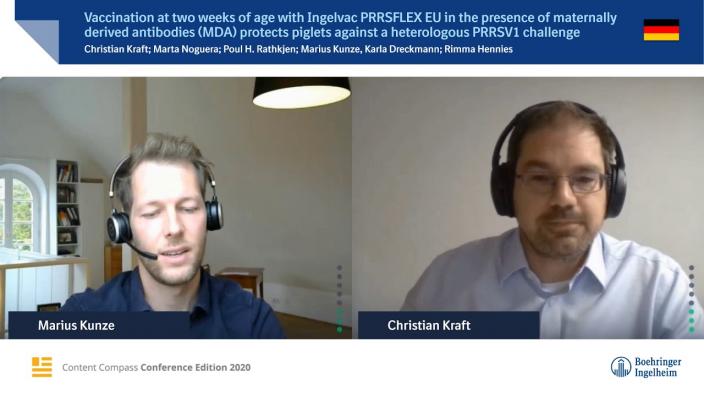
Porcine Reproductive and Respiratory Syndrome (PRRS) Virus is one of the major pathogens in pigs that have a significant economic impact on the swine industry worldwide. Modified life vaccine (MLV) against PRRSV has been demonstrated as an effective tool to control clinical signs related to infection. In literature, it is described that maternally derived antibodies (MDA) might interfere with MLV vaccination efficacy.

Porcine reproductive and respiratory syndrome virus (is responsible for losses in breeding as well as in growing pig herds and still has an important economic impact on pig production worldwide The objectives of the present study were 1 to establish an infection model with the virulent PRRSV 1 isolate AUT 15 33 in weaned piglets to reproduce symptoms comparable to those observed in the field 2 to assess the efficacy of the MLV vaccine “Ingelvac PRRSFLEX® EU” regarding viral shedding via oral fluids in vaccinated piglets after experimental PRRSV infection with PRRSV strain AUT 15 33 in comparison to non vaccinated piglets and 3 to determine if the dose of infection has an influence on the efficacy of the vaccine.
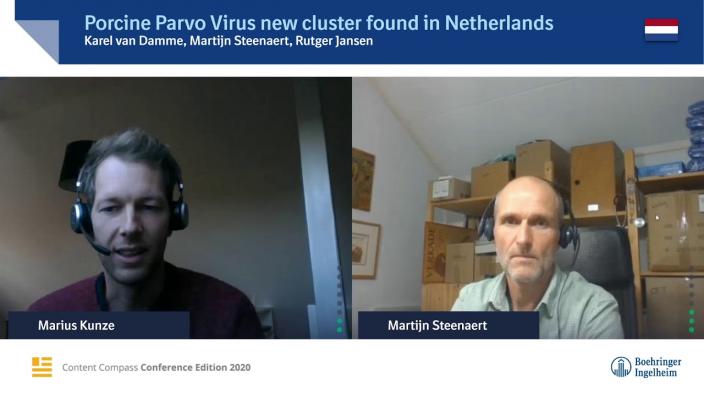
Porcine Parvo Virus (PPV), a single-stranded-DNA virus, has been known for over 50 years and is probably the most important cause of reproductive failure worldwide1. For years PPV is controlled by vaccination in order to prevent the classical clinical signs of still born piglets and mummies that vary in size and stage of mummification. Apart from this, PPV infections also potentially cause return to estrus and birth of too small litter sizes1. Within PPV there is evolution2 and over time in Europe PPV strains are shifting from cluster A to cluster D3. Recently evidence for the presence of a cluster D strain in the Netherlands was found. This is a summary of the case and consequent findings.
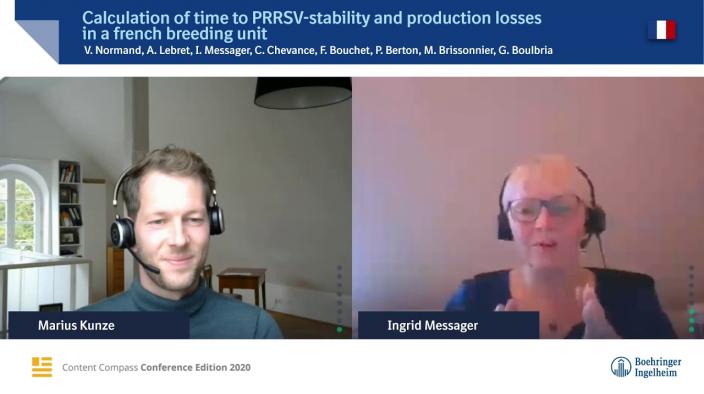
The aim of the study was to calculate the time to PRRSv-stability (TTS), the time-to-baseline-production (TTBP) and total losses in a European context.
Don’t miss any news on PRRS disease control Subscribe now to PRRS.com newsletter